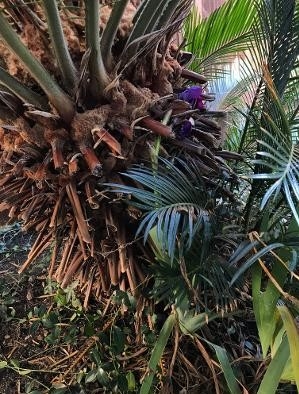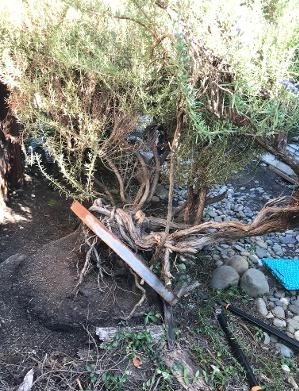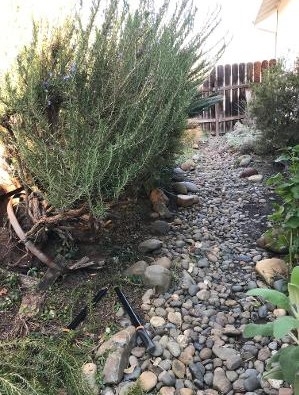Adversity
Plants have to put up with a lot! Winds can be severe enough to cause physical damage or persistent enough to dry plants out. Winds that bring dust or ash can also make plants' lives more difficult. Temperature fluctuations, both by absolute numbers and also by the timing in the plant's life cycle can also challenge a plant. A warm week or two in January or February can confuse a plant into leafing or budding out too early. Or a late freeze can kill tender seedlings or damage hardier perennials.
Water, of course, is essential to plants. There are plants that are adapted to swampy conditions and others that adapted to desert environments. But most plants faced with prolonged drought or with floods will not do well. Plants are also pretty specific about the amount of sun they will tolerate in a day.
Plants have predators as well. Not only do they have caterpillars to deal with, but there are grasshoppers, locusts, beetles, aphids, scale, thrips, leaf miners, and more. And there are mammalian predators: voles, moles, rabbits, deer, sheep, goats, cattle, and horses, to name a few.
I think we are all aware of the harm humans can cause to the plant kingdom on a global scale. That discussion would need to be the topic of another blog. But sometimes we individual gardeners can harm our own plants.
Some we ignore or forget, by not giving them the water or shade they need. Others we kill with kindness by over-watering or over-fertilizing. We often crave exotic plants from very different climates and then wonder why they don't thrive in our own landscape conditions.
I recently came across two examples of plants struggling with human-caused conditions in my own yard. Both were plants that do well in our climate zones and neither had watering issues. What they had in common was their location on the far side of the house. I can see them from my windows, but I don't physically go out to that part of my landscape very often, as the dry creek bed we have installed there has a very uneven walking surface.
I was weeding and cutting back shrubs in that side yard a few weeks ago. I was trying to cut off the bottom fronds of a sago palm so that it would be easier to walk by the plant. I had to lie on the ground to get under the fronds to see where to place my loppers to make the cut. I saw something strange on the trunk of the sago. It was a bearded iris in bloom.
The irises were the first things that had been planted in the side yard many years ago. Next came a groundcover that kept trying to overrun them. Much later I added a sago palm that had not thrived as a houseplant.
As soon as the sago palm got in the ground it started to grow. It's now about 4 and a half feet tall. It's amazing that the iris bloom spike could zig-zag its way up the trunk and then bloom given the amount of shade it was in under the canopy of fronds.
The second example is a rosemary shrub. This plant started off as a living Christmas tree that was decorated and placed on the front porch. After the holidays I planted it in a half barrel and put it out in the side yard. It seemed very happy there. Over the years it has provided us with fresh rosemary for cooking and boughs of rosemary for our annual Master Gardeners' Wreath Workshop.
After our latest windstorm, I noticed that the shrub seemed to be leaning over more into the center of the dry creek bed area. Looking from the side you can see that the original wooden barrel has rotted away leaving only the metal hoops. The roots are growing through the remaining mound of soil and into the ground. The winds must have wrenched the plant up a bit causing it to lean forward.
Since the plant is still doing well, I decided that trimming off the large branches on the front of the plant should decrease the pressure being exerted on the rest of the plant. As the plant is in full bloom right now, I just trimmed a few branches and brought them inside to enjoy in vases. After it's done blooming, I'll do more radical surgery.
Seeing these tenacious plants battling through difficult conditions, that I have caused, has been inspiring. I will try to pay more attention, so I can catch problems before they get so severe. And I will see if I can take a lesson from my plants, and do my best to handle adversity in my own life.




